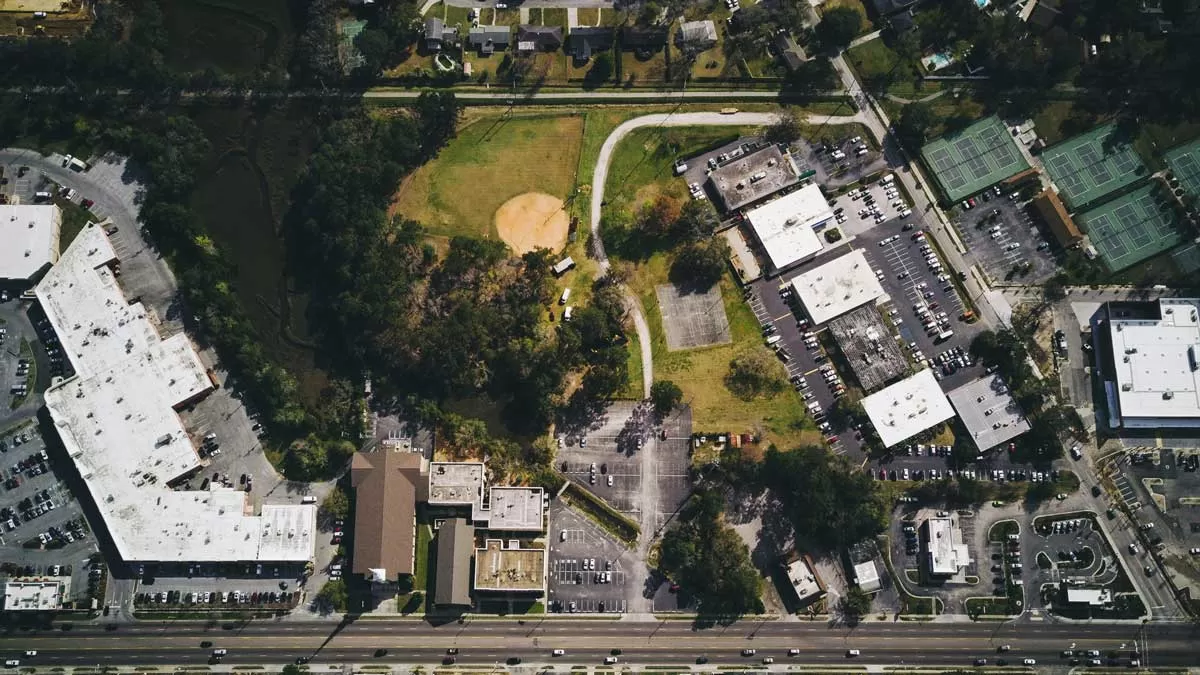BIM and GIS will be a game-changer in planning, designing, and executing the smart city projects.
Could you tell us the latest trends and scope of Building Information Modelling (BIM) in India? How is it transforming the Indian infrastructure industry?
Globally and specifically in India, construction has lagged other sectors in leveraging emerging technologies such as BIM, Augmented Reality and Virtual Reality (VR/AR), artificial intelligence (AI), cloud, and mobile technologies. But that is changing; as India grows increasingly digitised and infrastructure projects are key to kick start the economy after the pandemic, project management skills will expand into overseeing these technologies effectively for construction. The pandemic has also brought about ways of working that are more efficient and cost effective, and hence likely to stay. By digitally representing all aspects of infrastructure, construction companies can cut down on waste and delays by identifying potential challenges before execution in the field. BIM, which gives construction professionals advanced insight into designing buildings and infrastructure, will be highly useful. There is a wave of awareness programmes and activities regarding BIM in the country, that is created and supported by the technology companies, industry associations, and more importantly from India’s competent BIM manpower. Most of this highly skilled BIM manpower gain knowledge and experience by moving and working in overseas projects where BIM is being mandated and implemented. BIMAGE has started its operations in India and is catering to Indian customers in partnership with Autodesk cloud solutions. The heavy investments as announced by the government in infrastructure to revitalise the economy will provide an opportunity to this competent BIM manpower to use its experience and expertise in transforming the Indian Infrastructure industry.
Can you tell us in which sectors you see BIM adoption happening the most? Please throw some light on BIM in the smart cities sector.
Recently we have seen the success of the BIM in metro rail projects such as Nagpur Metro, Delhi Metro expansion, Chennai Metro, and the great success story of BIM implementation in Bangalore Airport. We are seeing interest coming from different sources – power plants, offices, residential projects, and greenfield and brownfield digital twin requirements, and thus we are not far away from successful BIM adoption in the residential projects industry - commercial buildings and other medium to small scale projects and some of the non-construction sectors to support their Digital Asset Management requirements. Smart cities have been called the future of urban development; in the next 30 years, the number of people living in cities will double, and this growth will require the construction of thousands of new buildings, roads, and other utility infrastructure. BIM fits perfectly in Smart City projects. Combining BIM and GIS will be a game-changer in planning, designing, and executing the Smart City projects, where a reliable city model is prepared from the building and infrastructure BIM along with the GIS data of the area.
Do you think the Indian construction industry is slow in BIM adoption? What do you feel are major problems/hurdles causing the slow adoption rate?
The main challenge here is that Indian construction industry players are not equipped well to adopt BIM and there is tremendous resistance to it. BIM environment requires training, timing, and software, but the companies would not shell out additional funds. Resources limitation, competition, and functional structure are also influential barriers to BIM adoption and in the absence of sufficient evidence in project successes, the use of BIM is perceived to be too risky. This results in the industry’s reluctance to change existing work practices. Companies are naturally inclined to adopt reliable methods such as the normal traditional 2D method to ensure the return on investment (RoI).
How is the role of a BIM manager evolving? What are challenges faced by a BIM manager today? As the digital adoption of the construction industry increases, we are likely to see more variances emerge between the different kinds of BIM Manager job roles. The ‘modernised CAD manager’ at one end of the spectrum will continue to focus on the design aspect but becoming increasingly key to the wider design process – whilst the more strategic end of the spectrum increasingly looks at BIM as a completely different discipline encompassing the entire built environment lifecycle. Beyond that – with the increase of smart cities, Internet of Things, and big data – I believe we will start to see a lot more BIM-related job titles involving the word ‘digital’, as we bring the relatively small bubble of BIM in line with the wider ecosystem of the digital built revolution. IT has become critical to the operation of AEC firms and companies. We need to have an organisation BIM manager who can act as a CIO or CTO. The role of this organisation BIM manager is different from a Construction BIM Manager. The organisation BIM manager must be a part of the decision-making processes whose advice is sought and considered for most of the processes within the organisation, not just for the creation of drawings. They should be involved in developing corporate objectives, processes and workflow, standards, overall practice management, knowledge management, R&Ds skill enhancement, project teams’ recruitment, etc. These developments and the sheer amount and variation of tasks can make it difficult, even for experienced project BIM managers, to keep track of everything, make progress and not feel regularly overwhelmed. Whether you are a BIM manager looking after the drawing protocols in a project, or an organisation BIM manager looking after the strategic implementation for the company, the title is much less important than the expertise, creativity, and technical rigor you bring to your work.
BIM is usually seen as more relevant for large projects as it requires big investment. What is its scope in medium and small-scale projects?
Medium and small-scale projects are generally delivered by Small and Medium Enterprises (SMEs) and they form the backbone of the country’s economic development in many states and regions. As productivity is the key issue in construction projects, BIM provides tangible and intangible benefits such as addressing performance problems that have long plagued the construction industry. Using BIM methods, compared with the traditional working model, can help them achieve coordination, cooperation, and integration whilst improving information flow and processing. Recognising the advantages, most large projects have started to use BIM and attempted not to use traditional methods again, as BIM increases their productivity and greatly decreases the requests for information and rework, etc. The potential benefits of the technologies may seem evident, but the industry adoption rate of BIM varies; especially its use to execute the medium and small-scale project is low. The problem that must be solved is how to achieve BIM adoption in SMEs in India. Government, academia, technology providers, and BIM associations must play positive roles at the early stages of BIM adoption in medium and small-scale projects. Issues such as high education costs and high economic investment must be solved. Apart from costs, the interest and willingness of project managers and engineers to use BIM also plays an important role. Governments should strengthen BIM training, educating in its usefulness, formulating positive perceptions, and promoting BIM adoption, and come up with a ROI matrix to evaluate the successes. Most importantly incentives are major drivers for adopting new technologies; improved efficiency is not enough to change business behaviour.
Do you believe Covid-19 has pushed this industry to embrace technology more than ever?
COVID-19 has presented many challenges and ongoing uncertainty to many businesses including construction. While it can be difficult to know how conditions will change, the ability to adapt at speed to a new way of doing business is critical. As the pandemic is forcing adoption of new business models and as many organisations scramble to adapt to these new conditions, some have been hampered by a lack of digital preparedness. Legacy and siloed technologies – always high-cost and slow-moving – are now an even greater liability. Now is the time to make those hard decisions around replacing legacy technologies and assessing new technologies, including cloud-based and mobile-enabled BIM Common Data Environment (CDE), and Augmented Reality (AR) and Virtual Reality (VR), which allow companies to track construction, enable collaboration among stakeholders and the project team, and from remote locations, thus enabling the projects to continue in a digital and virtual environment, eliminating the risk among the team members in meeting and working together. As construction sites all over the world gradually get active after lockdown and where sites have re-started, only a partial number of workers can safely return under social distancing rules. This could prove out to be tedious in getting optimum output within the stipulated time frame of projects. The sooner the adoption and implementation of digital technology such as BIM, cloud, and mobile enabled CDE, VR, etc, takes place, the better will be the results for the construction industry to cope up with the worst effects of the pandemic and get back on track. Lack of expertise and upskilling can be a major challenge.
How is the skill or resource availability in BIM segment? Any views on how we can include BIM in research or academics?
As we see an increase in adoption of BIM in many projects, BIM skills may be a standard expectation in all positions in the future. Also, many tasks may disappear when BIM reaches maturity within the industry. Identifying and prioritising the critical skills based on this may enable educators to better prepare students for long-term success. Building Information Modelling (BIM) can better integrate with the construction curriculum of any building and related courses such as architecture, civil engineering, mechanical engineering, etc. The expected level of BIM competency for diploma and ITI level students is recommended to be at basic and intermediate levels (understanding and applying), while for degree-level courses students need both technical and managerial skills and include sociotechnical BIM skills, such as collaborative and interdisciplinary BIM processes. To support industry requirements, I think the curriculum must focus on BIM adoption as well; like covering BIM integration with design and management concepts, addressing the logical sequence of building BIM knowledge and skills, covering all years of studies by prioritising, and selecting the courses based on direct inputs from the industry and benchmarks of BIM career paths in the job market. The best way here is to help students engage in experiencing and constructing knowledge of BIM implementation workflows. For that, the instructors need to act more as coaches and facilitators, and students should assume more responsibility in learning. Collaborative learning through team assignments, knowledge-sharing platforms and web-based media, and online forums can enhance group discussion and peer learning opportunities, and it can raise stimulating topics for sharing knowledge and lecturing in class


















